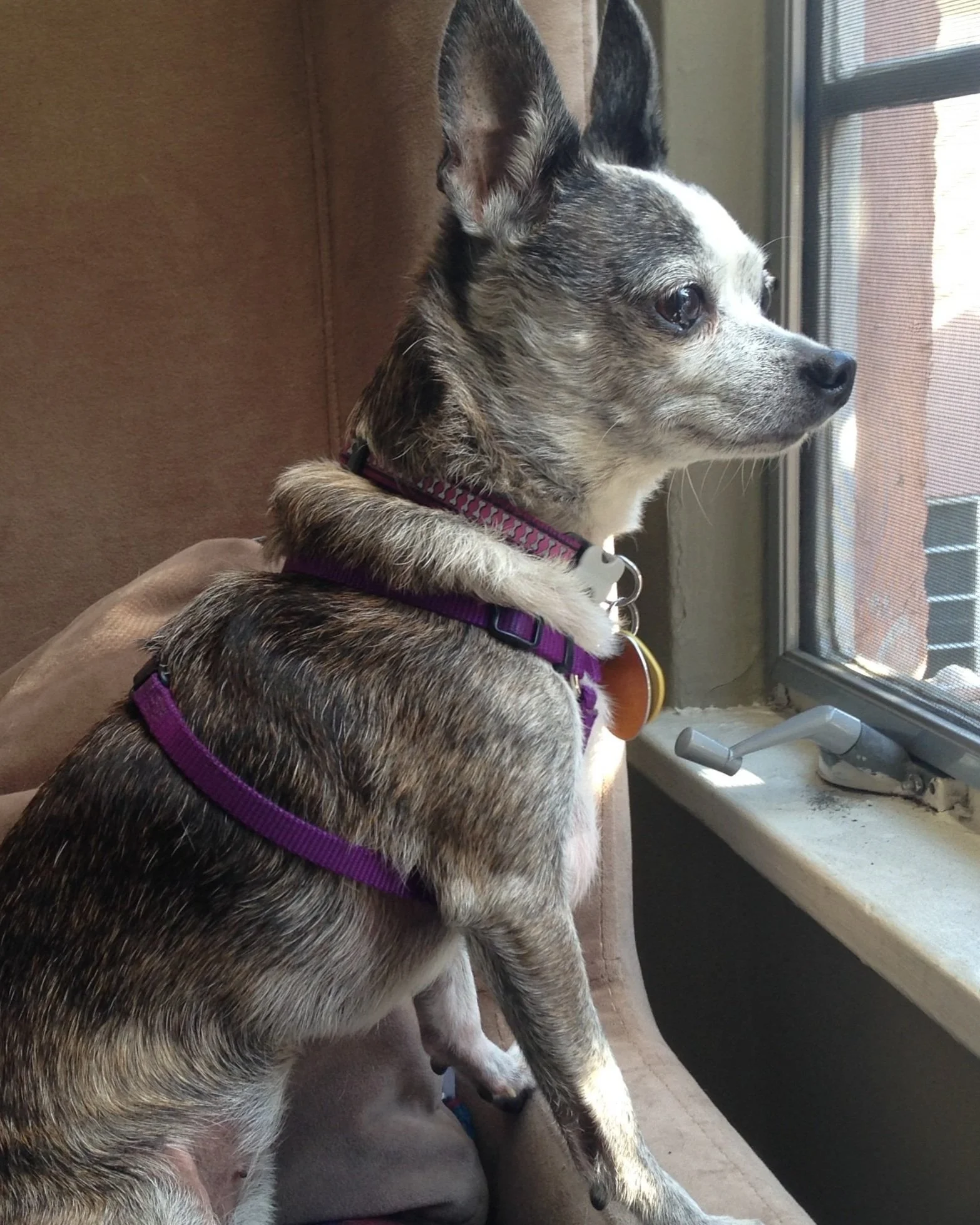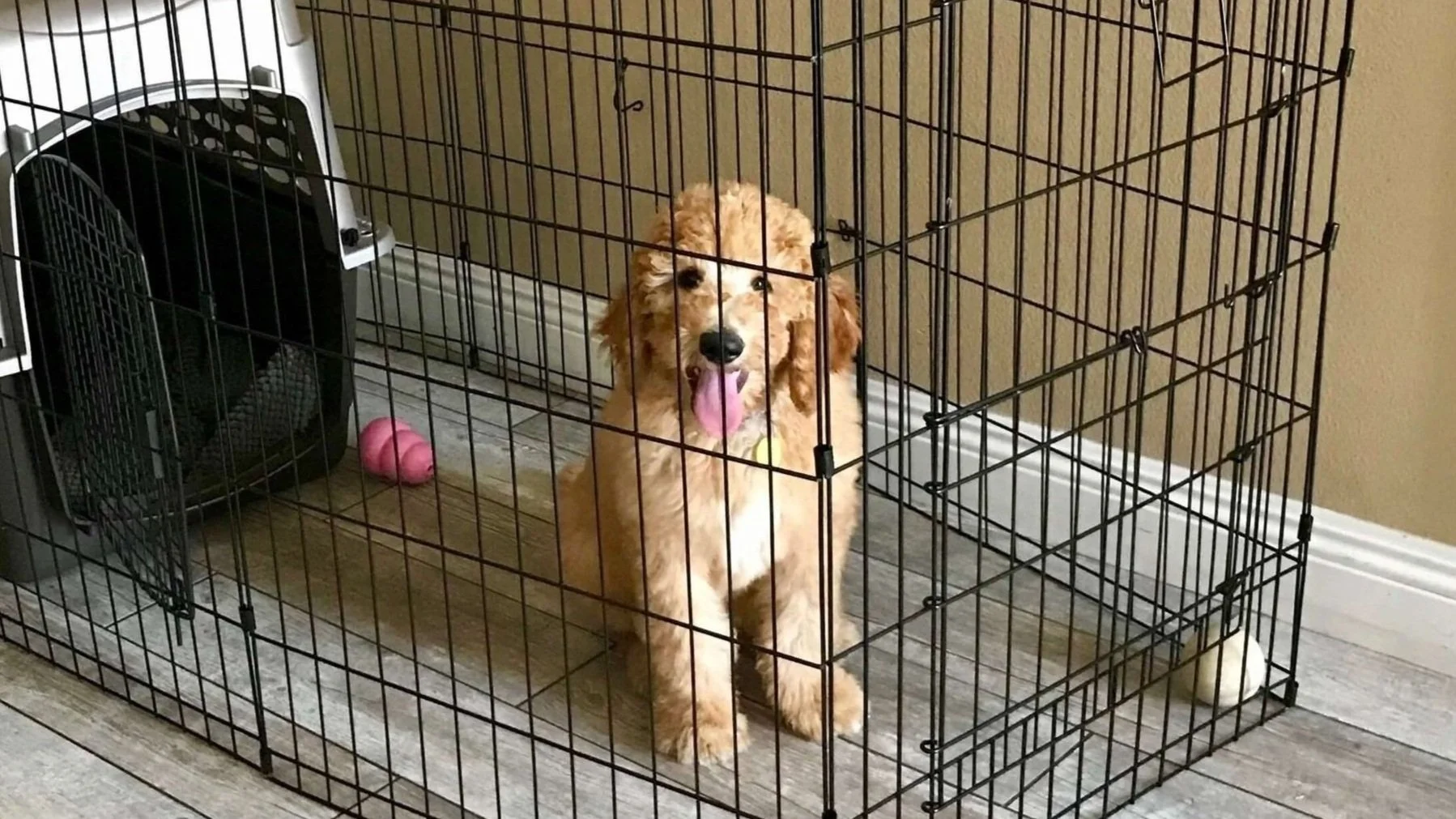How To Prevent Separation Anxiety in Dogs
5 Simple Steps to Stop It Before It Starts
Dog separation anxiety isn’t just a little whining when you walk out the door—it’s a serious behavioral condition that causes intense fear, panic, and distress in dogs when they’re left alone or separated from their favorite person.
In more extreme cases, dogs with separation anxiety may bark or howl for hours, destroy doors trying to escape, refuse food, soil the house, or even injure themselves in desperate attempts to reunite with their humans. Some have been known to chew through crates, shred blinds, or throw themselves through windows.
👉 The good news? With the right approach, separation anxiety can often be prevented before it ever starts.
What Causes Dog Separation Anxiety?
Many people bring home a new puppy or rescue dog over a holiday weekend or during time off from work so they can bond and settle in together—which is a great idea.
But it’s just as important to use that time to help your dog adjust to being alone. If you wait until your first day back at work to introduce alone time, your dog may struggle with the sudden change and develop separation anxiety.
To prevent this, start gradually introducing the routine your dog will follow once your normal schedule resumes.
By preparing your puppy or dog in advance, you’ll set them up for success and make it much easier to leave them alone in the future.
How to Set Your Dog Up for Success: A 5-Step Routine to Prevent Separation Anxiety
Here’s a simple, step-by-step routine you can start using right away to help your dog build confidence and comfort being alone—before separation anxiety has a chance to take hold:
Prepare Your Dog for Alone Time Before You Head Back to Work
Once separation anxiety takes hold, it can be tough to reverse—and incredibly disruptive. Barking, destruction, and stress can lead to noise complaints, strained relationships with landlords or neighbors, and even isolation from your own social life because you can’t leave your dog alone.
To avoid these problems, start preparing your dog for alone time before your routine changes. Ask yourself:
How many hours will your dog be alone each day?
What time will your dog wake up and go to sleep?
When will walks, meals, and bathroom breaks happen?
Can someone visit midday to offer a potty break, playtime, or training session?
What transition plans can you put in place when returning to work or school?
Dogs thrive on consistency. The sooner you establish a realistic routine that mirrors your daily life, the more confident and comfortable your dog will feel when you're not around.
2. Create Safe Spaces to Help Your Puppy or Dog Feel Secure and Prevent Separation Anxiety
When you first bring a new puppy or dog home, your top priority is to help them feel safe and secure in their new environment. Start by placing their bed next to yours at night to ease the transition. If you prefer not to have your dog in the bedroom, you can place their bed just outside your door with a baby gate to maintain closeness without sharing the room.
During the day, create safe spaces in your main living areas using a crate, bed, or cozy corner your dog can retreat to. For puppies especially, setting up a playpen where they can relax near their new family helps them feel included while preventing overstimulation or stress.
These designated confinement areas not only give your dog a sense of comfort and independence, but also prevent unwanted behaviors and support potty training success—especially when you can’t supervise them directly. They’re a simple, proactive way to prevent separation anxiety and create a calmer household from day one.
3. Take Time to Help Your New Puppy or Dog Adjust to Their Routine
Bringing home a new dog is a big life change—for both of you! Whenever possible, take a few days off from work or school to help your puppy or rescue dog get used to your home, routine, and presence.
This initial bonding period can make a huge difference in preventing separation anxiety from forming. Your dog needs time to build trust, understand when you come and go, and learn that being alone doesn’t mean being abandoned.
If taking time off isn’t feasible, ask a trusted friend, neighbor, or professional pet sitter to help bridge the gap. The more supported your dog feels during those early days, the more confident and independent they’ll become over time.
4. Alone Training for Dogs: Step-by-Step Guide to Easing Separation Stress
Helping your dog feel comfortable and secure when alone is essential to preventing separation anxiety. Alone Training is a gradual process that teaches your dog to tolerate short periods without you, building their confidence and reducing stress.
Even if you think your dog can handle being alone, it’s important to test this by practicing “mock departures.” This way, you can gently prepare your dog for the times when you’re away during the day.
Here’s how to get started with Alone Training:
Step 1: Make sure your dog has had a bathroom break and some exercise to burn off excess energy. Then, begin your leaving routine by putting on your coat, picking up your keys, or using a consistent phrase like “I’ll be back” or “See you later.” Step outside the door, then immediately come back inside. Ignore your dog until they settle down and relax (lying down is a good sign).
Step 2: Repeat Step 1 multiple times until your dog shows signs of calmness and disinterest in your departures, perhaps even starting to doze off.
Step 3: Gradually increase the time you stay outside, starting with just 5 seconds, then 10, 15, and up to 30 seconds or more. Return before your dog becomes anxious, always ignoring attention-seeking behavior until they’re calm.
👉 Important Note: Some dogs may progress through these steps quickly—in one or two sessions—while others may take a week or two depending on temperament. Be patient, and always work at your dog’s pace.
5. Slowly Build Up to Longer Absences
Once your dog is comfortable with very short separations—around 30 seconds—begin stepping just outside the door and returning immediately. Practice this until your dog stays relaxed and shows no signs of stress.
From there, gradually increase the time you're away in small increments, aiming to work up to 2 to 5 minutes of calm alone time. As your dog gains confidence, you’ll naturally need fewer daily sessions to maintain progress.
Try to fit in at least two short sessions per day for best results.
💡 The good news? The first 5 minutes are typically the hardest. If your dog can handle that, you’re well on your way to building longer, stress-free absences.
Final Thoughts: Start Now to Prevent Heartache Later
Preventing separation anxiety doesn’t require perfection—just a little consistency, patience, and planning. The steps you take today will help your dog feel safe, confident, and secure tomorrow.
Whether you’ve just brought home a new puppy or adopted a rescue, giving them the tools to cope with alone time is one of the kindest things you can do.
Remember: It’s much easier to prevent separation anxiety than to undo it later. Start small, stay steady, and celebrate progress—no matter how tiny it seems.
If you're feeling unsure or want expert support creating a plan tailored to your dog’s needs, I'm here to help.
👉 Book a personalized consultation to get step-by-step guidance, expert insight, and a custom training plan for your pup. Let’s set your dog up for success—starting today.
Can’t Leave Your Dog Alone Yet?
If your dog is struggling with being alone, don’t wait—professional guidance can make all the difference. Book a personalized consultation with a certified dog trainer and separation anxiety specialist, and get expert strategies tailored to your pup’s unique needs.
Alexandra Bassett, CPDT-KA
Owner and lead trainer at Dog Savvy, Alexandra specializes in positive, game-based dog training and helping dogs overcome challenging behaviors such as separation anxiety.
Certified as Knowledge Assessed by the Council of Professional Dog Trainers (CPDT-KA), she offers personalized online training sessions via Zoom tailored to your dog’s unique needs.
If you’re concerned about your dog’s behavior or symptoms, don’t hesitate to get expert guidance.









Is your puppy’s biting out of control?
Puppy biting can be frustrating and overwhelming, but you don’t have to manage it alone. Our expert dog trainers specialize in positive, game-based puppy biting solutions designed to teach bite inhibition and promote calm behavior.
Start your journey to a well-mannered, happier puppy with proven techniques that work.
👉 Book your game-based puppy training intro session today!